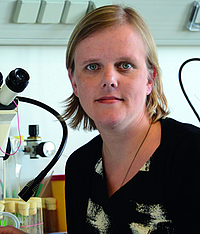
Abstract:
A major challenge for the brain is to keep stable neural representations of stimulus features while facing a wide range of sensory inputs in natural scenes. Visual systems must stably compute contrast and motion cues, while actively navigating the environment. However, self-motion of the animal for example leads to rapid changes in background illumination, and to global motion cues occurring across the animal’s eye. How does the visual system deal with such changes caused by animal behavior? Here, I will discuss how Drosophila stably processes visual information under constantly changing conditions.
First, I will talk about changes in luminance that occur slowly throughout the day, but also happen at millisecond time scales when our eyes saccade across a natural scene, or when the visual input changes rapidly due to self-motion. We have investigated the computational principles, as well as the cellular mechanism that allows flies to handle rapid changes in illumination present when animals navigate natural visual scenes. Connectomics analyses helped reveal the circuit substrate and showed remarkable heterogeneity in critical circuit motifs across the eye.
Stable contrast signals are then used to compute higher-order visual features, one of which is the direction of motion. In the second part of my talk, I will show how motion computation is tuned to the behavior of the animal already in local direction-selective cells, which encode patterns of optic flow at the population level. Together, our work argues that visual processing strategies have evolved to handle the demands imposed by the animal’s own behavior.





